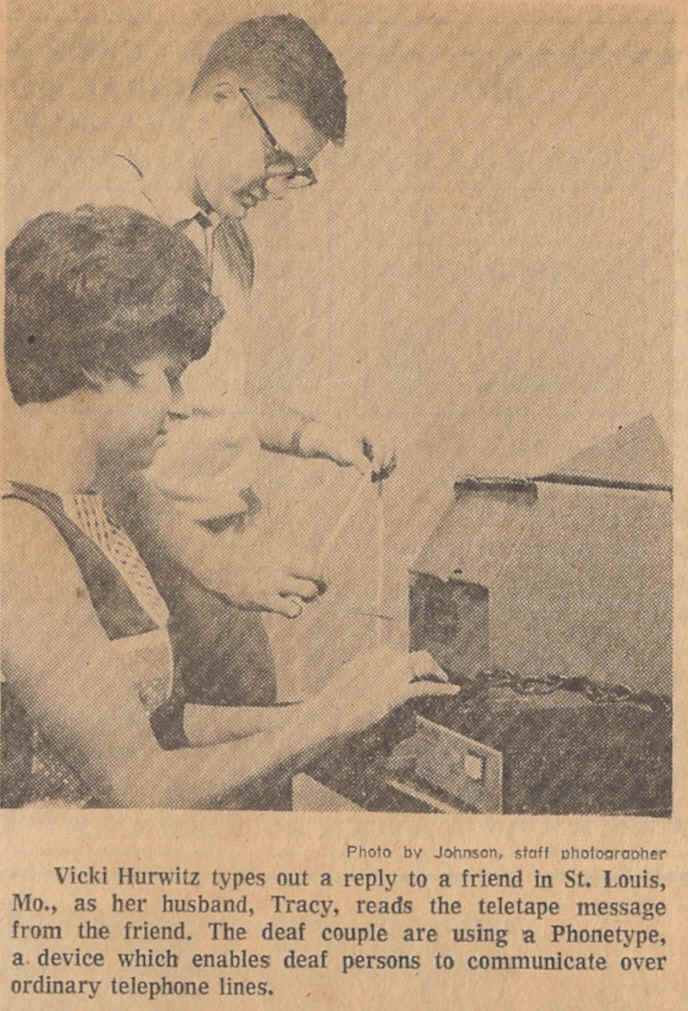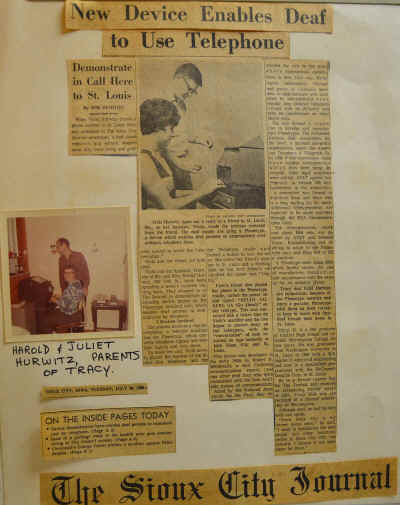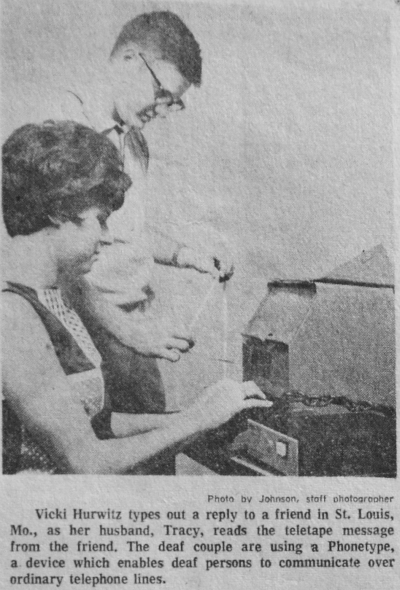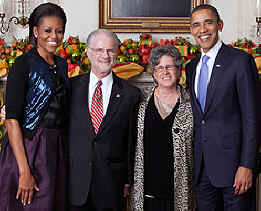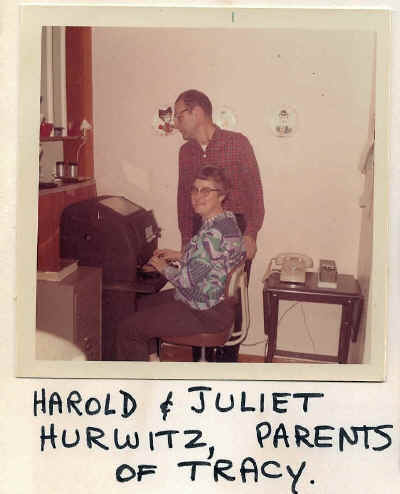|
Early TTY with Alan & Vicki Hurwitz
(From the Paul and Sally Taylor Collection at SMECC.)
Sally Taylor states " Well, all I can remember was Alan & Vicki were going to visit his parents in Sioux City and he wanted to show them how the TTY worked...it was our way of spreading news and information so people would consider purchasing one for themselves...in other words, the TTY was used for sales pitching wherever we went! We were all living in St. Louis at that time. Yes, they eventually got one for themselves as you can see in another photo on that page. His parents were deaf, too."
|
By Bob Hentges, Sioux City Journal Staff Writer Sioux City, Iowa, Tuesday, July 30, 1968.
When Vicki Hurwitz dialed a phone number in St. Louis Monday afternoon in the Sioux City Journal newsroom, a half dozen reporters and editors stopped what they were doing and gathered around to watch the "conversation." Vicki and her friend are both deaf. Vicki and her husband, Tracy, son of Mr. & Mrs. Harold Hurwitz, 826 18th St., have been spending a week’s vacation visiting here. They dropped in at The Journal to demonstrate an amazing device known as the Phonetype terminal unit, which enables deaf persons to communicate by telephone. 3 Devices Involved The process involves a regular telephone, a teletype machine and the Phonetype, which converts telephone signals into teletype signals and vice versa. To make her call, Vicki merely placed the handset of the direct-dial telephone into the Phonetype cradle and pushed a button to turn the set on. She dialed her friend’s number in St. Louis and a flashing light on the deaf friend’s set signified the phone was "ringing". Vicki’s friend then placed her phone in the Phonetype cradle, turned the power on and typed "HELLO SAL HERE GA (Go Ahead)" on her teletype. This was converted into a ticker tape on Vicki’s machine and the two began to chatter away on the teletypes, with the "conversation" of both recorded on tape instantly at both Sioux City and St. Louis. This device was developed in the early 1960’s by Robert H. Weitbrecht, a deaf California communications expert, and two other deaf men who were dissatisfied with the then available means of communication. Aided by the National Association for the Deaf, they developed the unit to the point where experimental installations in New York City, Washington, Indianapolis, Chicago and points in California were able to communicate with each other by teletypewriter over regular long distance telephone circuits with no difficulty and with no interference on other phone calls. The trio formed a corporation to develop and manufacture Phonetypes. The Alexander Graham Bell Association for the Deaf, a national non-profit organization, asked the American Telephone & Telegraph Co. in 1966 if the association could have surplus teletypewriters which then were being destroyed. After legal questions were settled, AT&T agreed last February to release 200 teletypewriters to the association. A committee was formed to distribute them and there now is a long waiting list for more. Additional teletypewriters are expected to be made available through the RCA Communications Corp. The teletypewriters, which cost about $800 new, are donated by AT&T and Western Union. Reconditioning and rewiring to adapt to the Phonetype may cost from $10 to $25 a machine. A Phonetype costs about $300 which barely covers the cost of manufacture. Installation and maintenance cost the same as for an ordinary phone. Tracy and Vicki Hurwitz are enthusiastic boosters of the Phonetype network and carry a portable Phonetype with them on their travels to keep in touch with their deaf friends back home in St. Louis. Tracy, 25, is a 1961 graduate of Central High School and attended Morningside College for two years. He was graduated from Washington University in St. Louis in 1965 with a B.S. degree in electrical engineering and now is a specialized programmer with the McDonnell-Douglas Corp. in St. Louis. He is a former carrier boy for The Journal and received an outstanding carrier award in 1959. Tracy also was the recipient of a Journal scholarship to Morningside. Although deaf, he and his wife both can speak. "Since Sioux City is my former home town," he said, "I want to familiarize the deaf people and other interested people in Sioux City with this network. I believe it can open doors for them."
(From the Paul and Sally Taylor Collection at SMECC.) |
|
|
Harold and Juliet Hurwitz - Parents of T. Alan Hurwitz. (From the Paul and Sally Taylor Collection at SMECC.) |
